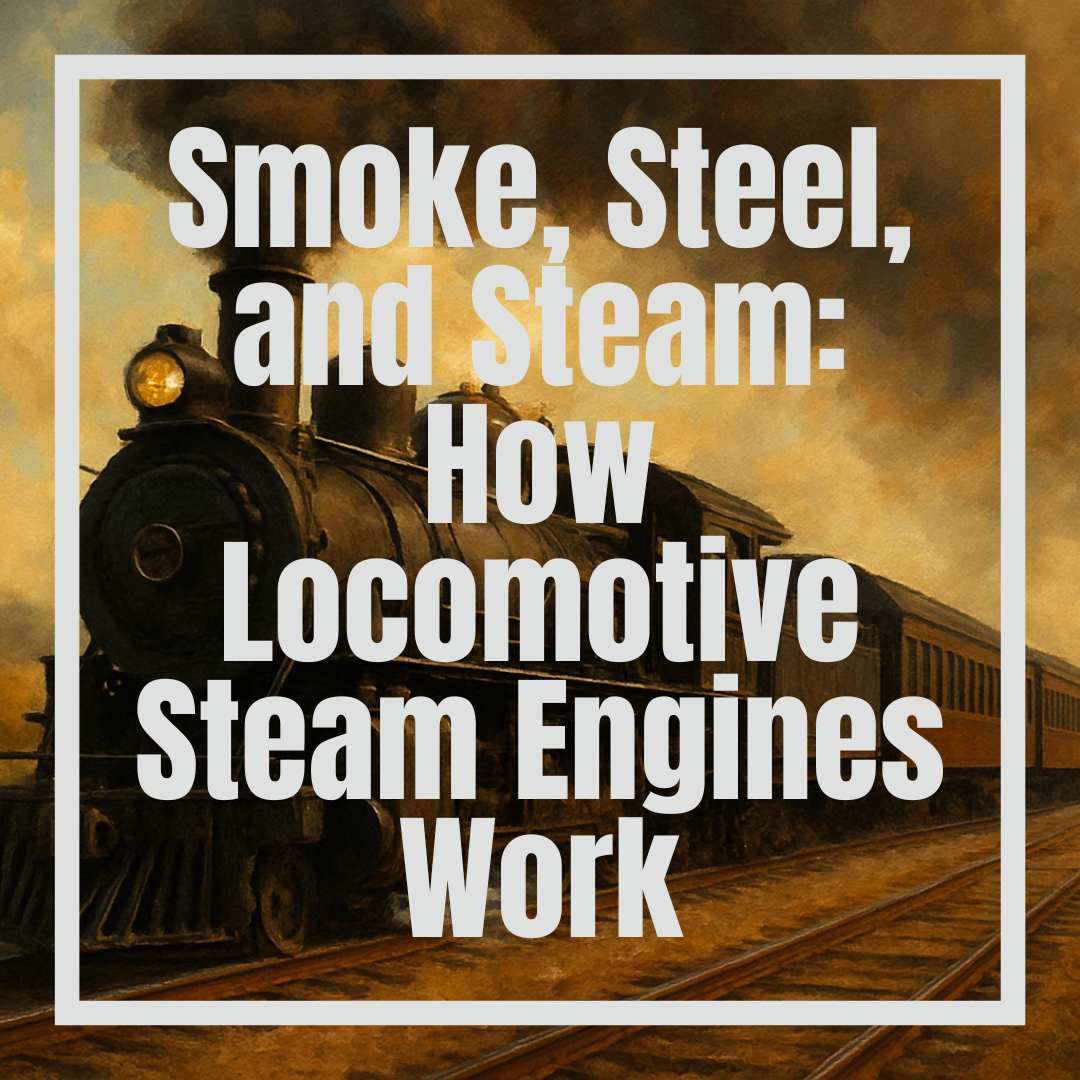Enthusiast Corner
Smoke, Steel, and Steam: How Locomotive Steam Engines Work
For more than a century, the steam locomotive was the beating heart of railroads, powering industry, trade, and exploration across continents. To train enthusiasts, the sight of a steam engine in motion—the billowing smoke, the pounding pistons, the rhythmic chuff of exhaust—is more than nostalgia. It’s an engineering masterpiece worth understanding in detail.
The Boiler: Turning Water into Power
At the core of every steam locomotive is the boiler, essentially a massive pressure vessel. Coal, wood, or later oil was burned in the firebox, heating a network of tubes filled with water. As heat transferred through the metal surfaces, water turned into pressurized steam.
Think of the boiler as a giant energy converter: fuel went in, heat was transferred, and stored steam energy built up—ready to be unleashed as motion.
Steam to Motion: The Pistons at Work
High-pressure steam was piped from the boiler to cylinders mounted near the wheels. Inside each cylinder, steam expanded against a piston, pushing it back and forth. That piston was connected to a connecting rod which drove the driving wheels.
This simple cycle—steam in, piston out, piston back—turned reciprocating motion into rotary power. Every "chuff" of exhaust that train fans love to hear was actually steam being released after doing its work.
The Valve Gear: Timing the Power Stroke
What made steam engines elegant wasn’t just brute force, but timing. Systems like the Stephenson valve gear or Walschaerts valve gear controlled when steam entered and exited the cylinder. By adjusting the timing, engineers could fine-tune power for starting heavy loads, climbing grades, or cruising efficiently.
This was the art of the locomotive—the ability to balance power, efficiency, and speed by controlling steam’s flow with remarkable precision.
Driving Wheels and Traction
Locomotives were often described by their wheel arrangements—like the famous “4-6-2 Pacific” or “2-8-0 Consolidation.” The numbers told enthusiasts how many leading, driving, and trailing wheels a locomotive had. Larger drivers allowed higher speeds, while smaller drivers gave more tractive effort for hauling freight.
It was a tradeoff between speed and strength, and railroads carefully matched locomotives to the jobs they needed done.
Fireman and Engineer: Masters of the Machine
Operating a steam locomotive required teamwork. The fireman shoveled coal (or managed oil burners), keeping boiler pressure within safe limits. The engineer worked the throttle and brakes, carefully balancing steam pressure, valve gear, and adhesion on the rails.
A good crew could make a steam engine sing—running smooth, efficient, and powerful across the rails.
Why Enthusiasts Still Love Them
Though replaced by diesel and electric power in the mid-20th century, steam locomotives remain iconic because they feel alive. You can see the motion of rods, hear the blast of the exhaust, and smell the coal smoke. They’re tactile machines where engineering is visible in every moving part.
More than just transportation, steam locomotives embodied an age of progress, connecting distant cities and shaping entire economies. For enthusiasts, studying how they worked isn’t just history—it’s a way to appreciate the incredible marriage of science, craftsmanship, and human skill.
The steam locomotive was a rolling power plant, a moving factory of fire and steel that turned water into motion. For over a century, it defined railroads and symbolized industrial might. Even today, when a preserved steamer rolls by on excursion, enthusiasts know they’re witnessing not just a train—but one of the greatest mechanical achievements ever built.

